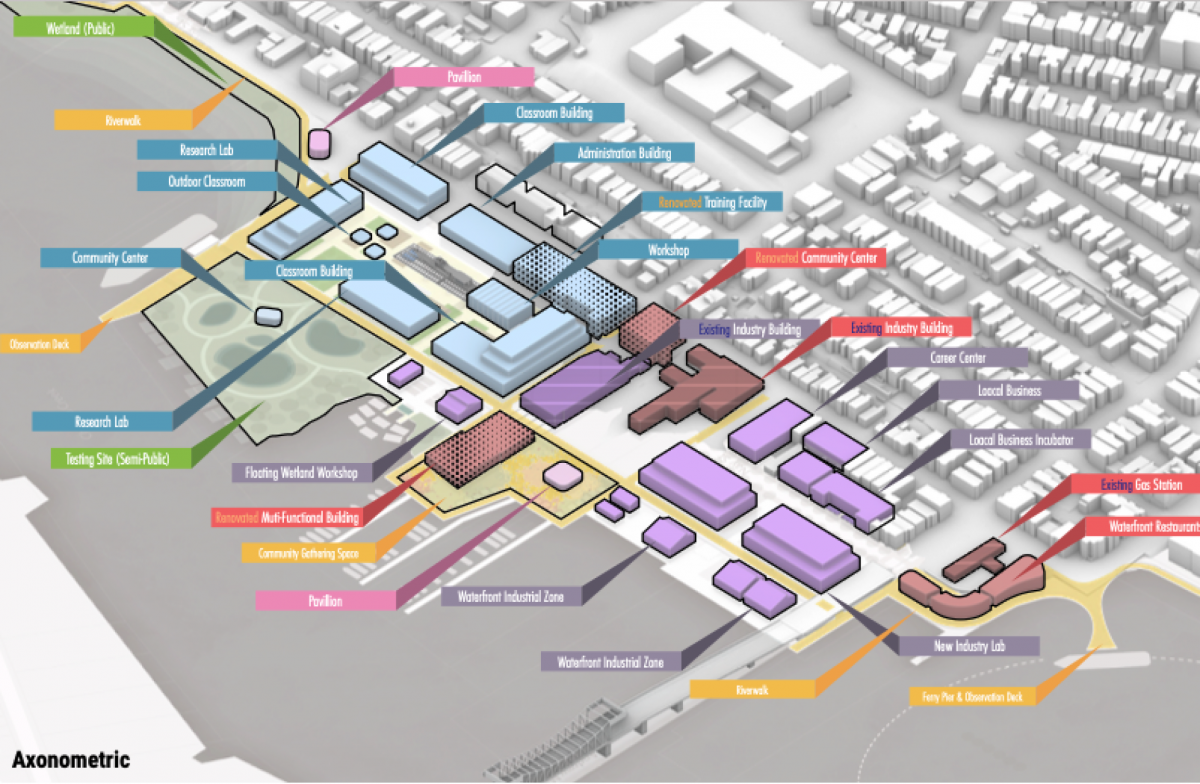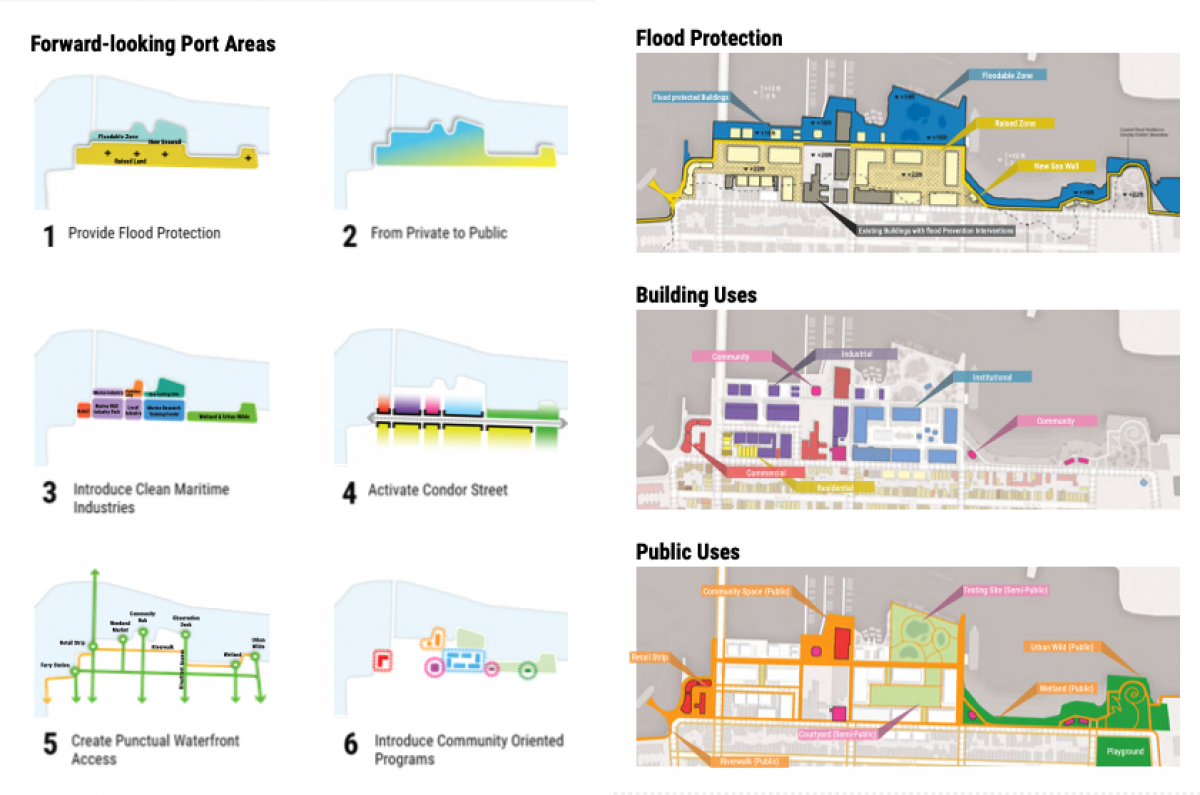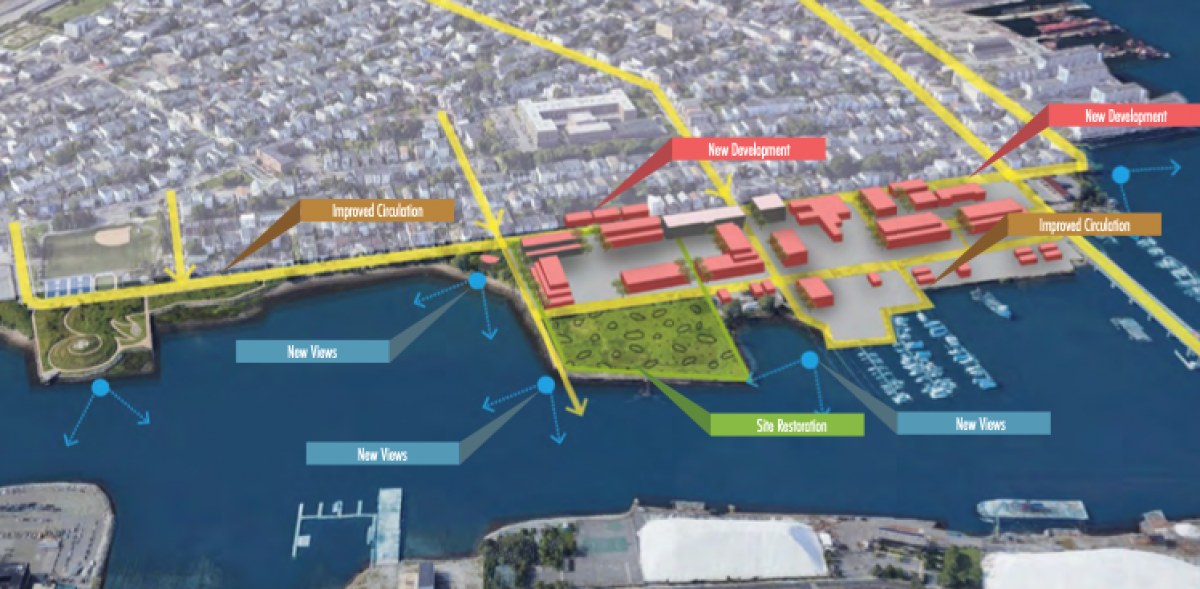




CONDOR STREET REDEVELOPMENT
This project applied a series of strategies outlined in the Designated Port Area (DPA) Toolkit to the waterfront along Condor Street in East Boston. This site was identified as an area where there is a need for improvements to facilitate public access to the waterfront and where current private uses are neither DPA-compliant nor serving the community. In this vision, a combination of industrial, civic, and recreational facilities operate within the DPA to enhance access to the waterfront for businesses and local residents.

DESIGNING WITH THE COMMUNITY in a DPA

History & Current Conditions
The working waterfront is a core part of the history and identity of Boston and Eastern Massachusetts. Rocky and nutrient-depleted soils prevented early colonizers from developing a large-scale agricultural economy. Thus, they relied on the ocean and its tributaries and shifted toward maritime-based endeavors like fishing, shipping, and trading. By 1660, shipbuilding was a leading industry in the towns of Newburyport, Ipswich, Gloucester, Salem and Boston. In addition to those activities, a whaling industry flourished from the late 17th century to the mid-19th century. Although the whaling industry dwindled with the advent of petroleum, commercial trading, fishing, and shipping continue to characterize the working waterfronts of Boston today. A forward-looking approach that considers 21st century needs will help ensure that the urban waterfront can maintain this rich maritime heritage while continuing to thrive.
DPAs preserve potential for economic development by maintaining industrial uses. Port industries are as important now as they have been in the past. According to a study conducted by the University of Massachusetts at Dartmouth, the maritime economy supported $3.4 billion in wages and nearly 90,000 workers through the latest recession.6 The industrial and manufacturing sector more broadly employs a high share of workers without a college degree and pays them significantly more than other sectors.7 Industries are constantly evolving and new ones are forming. Maintaining sites for industrial uses means that a region can adapt to the needs of those new industries as they arise, leading to job growth and economic development.
Methods
When applying the principles of activating DPAs to Condor Street, the team applied six key strategies: (1) providing flood protection, (2) creating a gradient of private to public space, (3) introducing clean maritime industries, (4) activating Condor Street, (5) creating punctual waterfront access, and (6) introducing community-oriented programs.


Site Planning Process
Some of the strategies presented as part of this toolkit have been applied to the Chelsea Creek DPA along Condor Street in East Boston in a site plan. This site was identified as an area where there is a need for improvements to facilitate public access to the waterfront and where current private uses are neither DPA-compliant nor serving the community.
Site Plan
